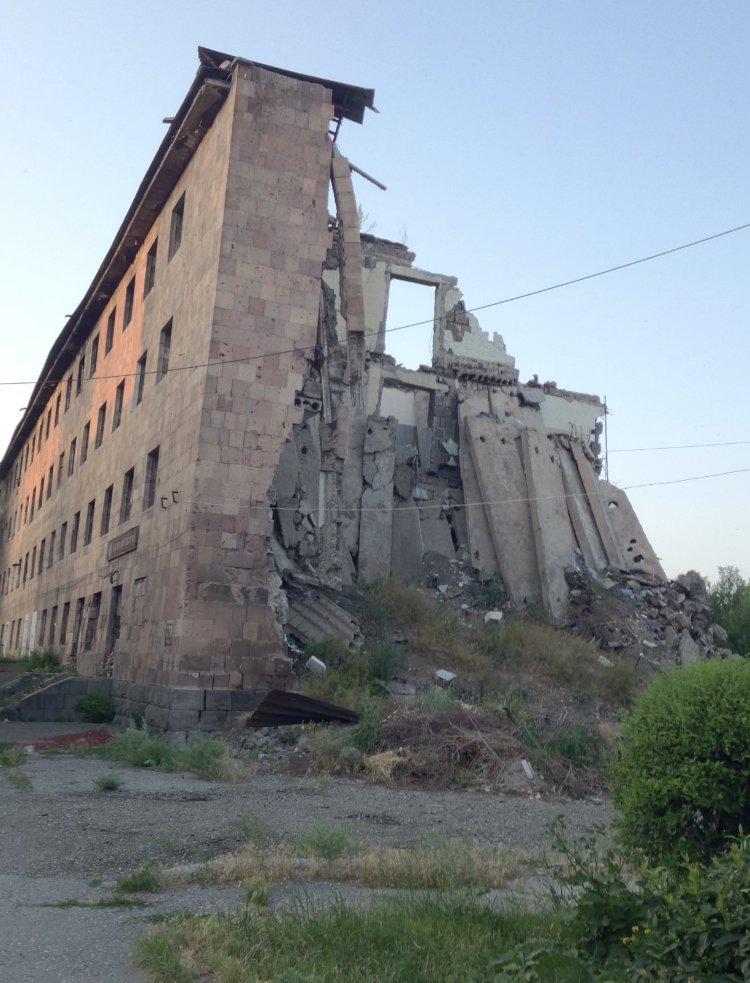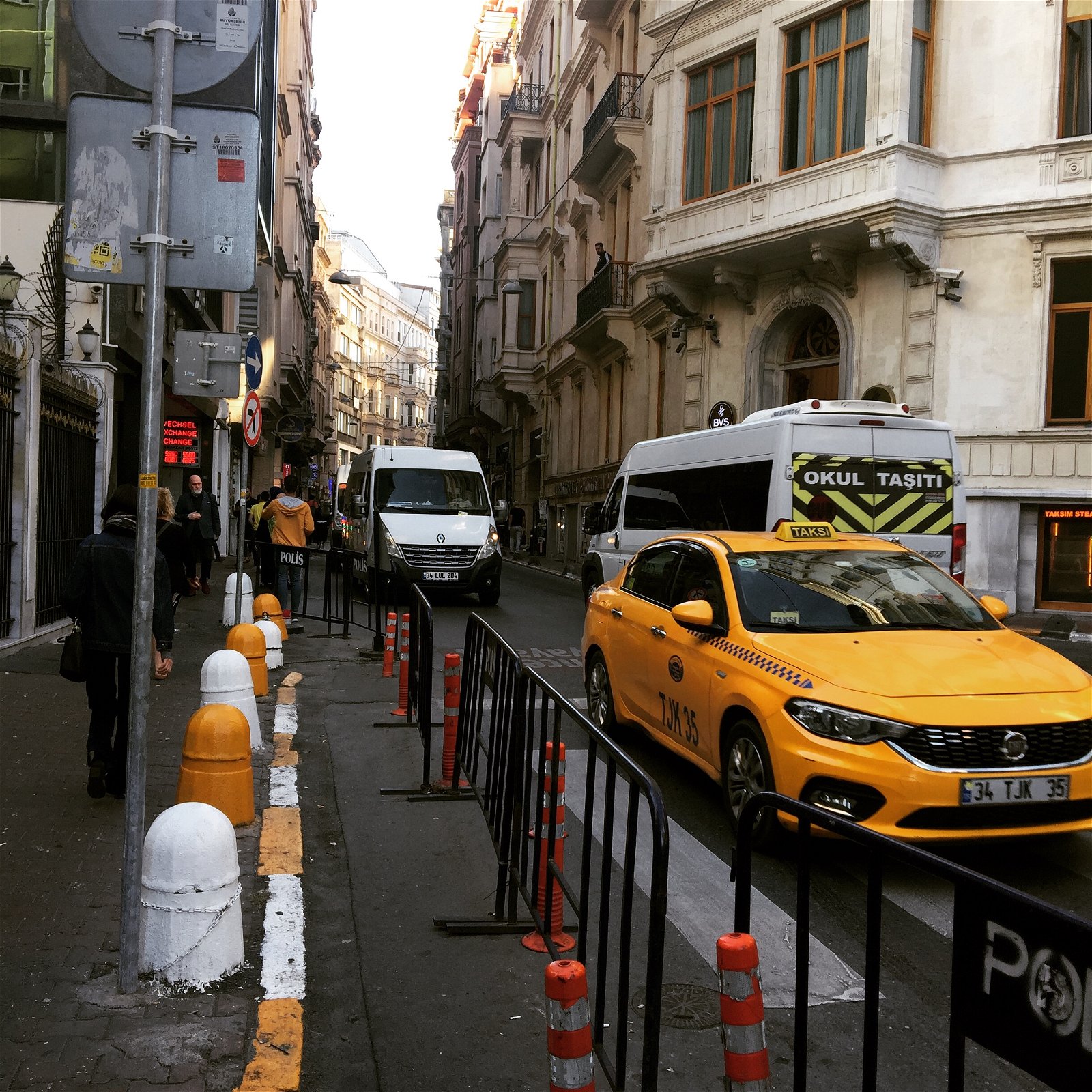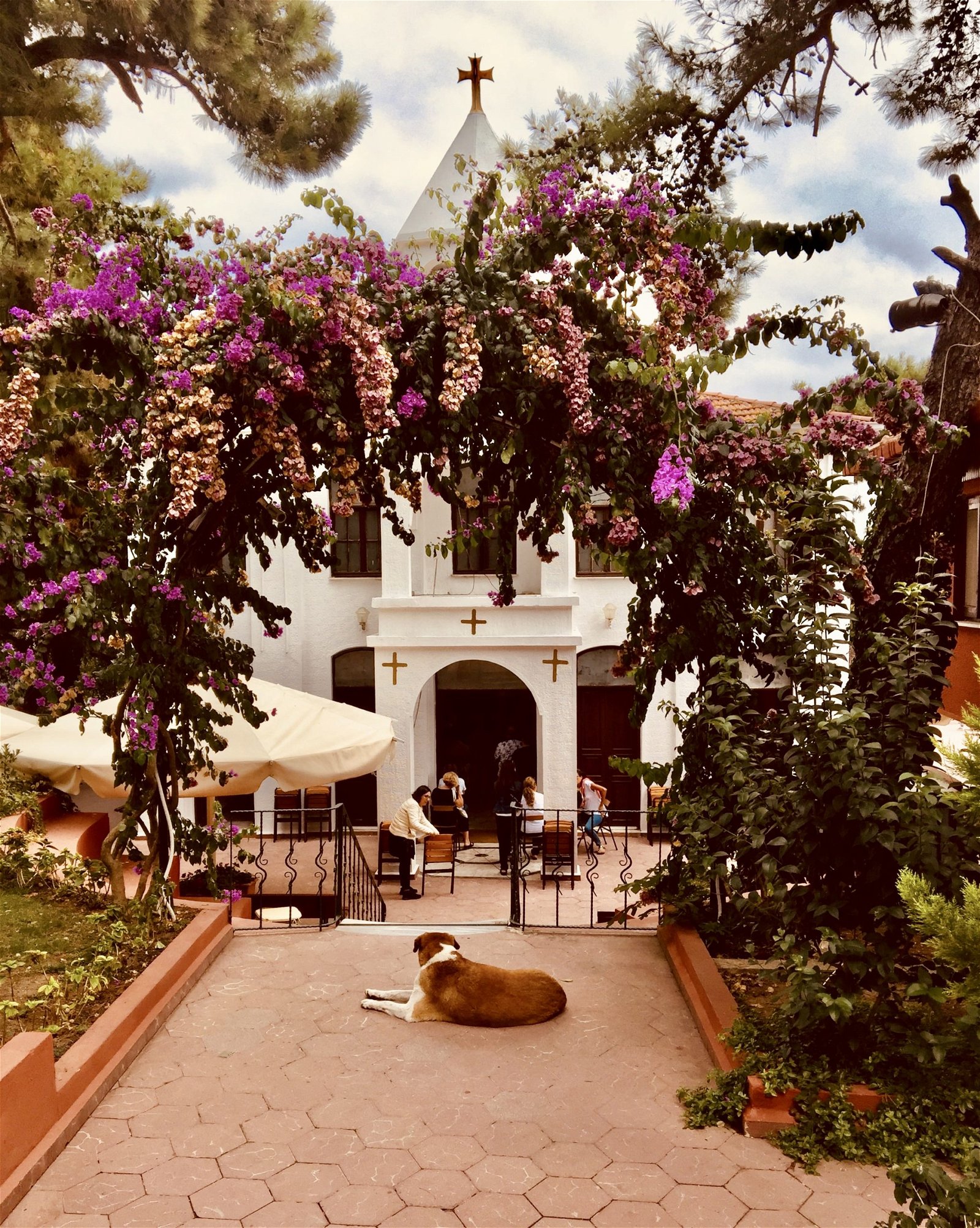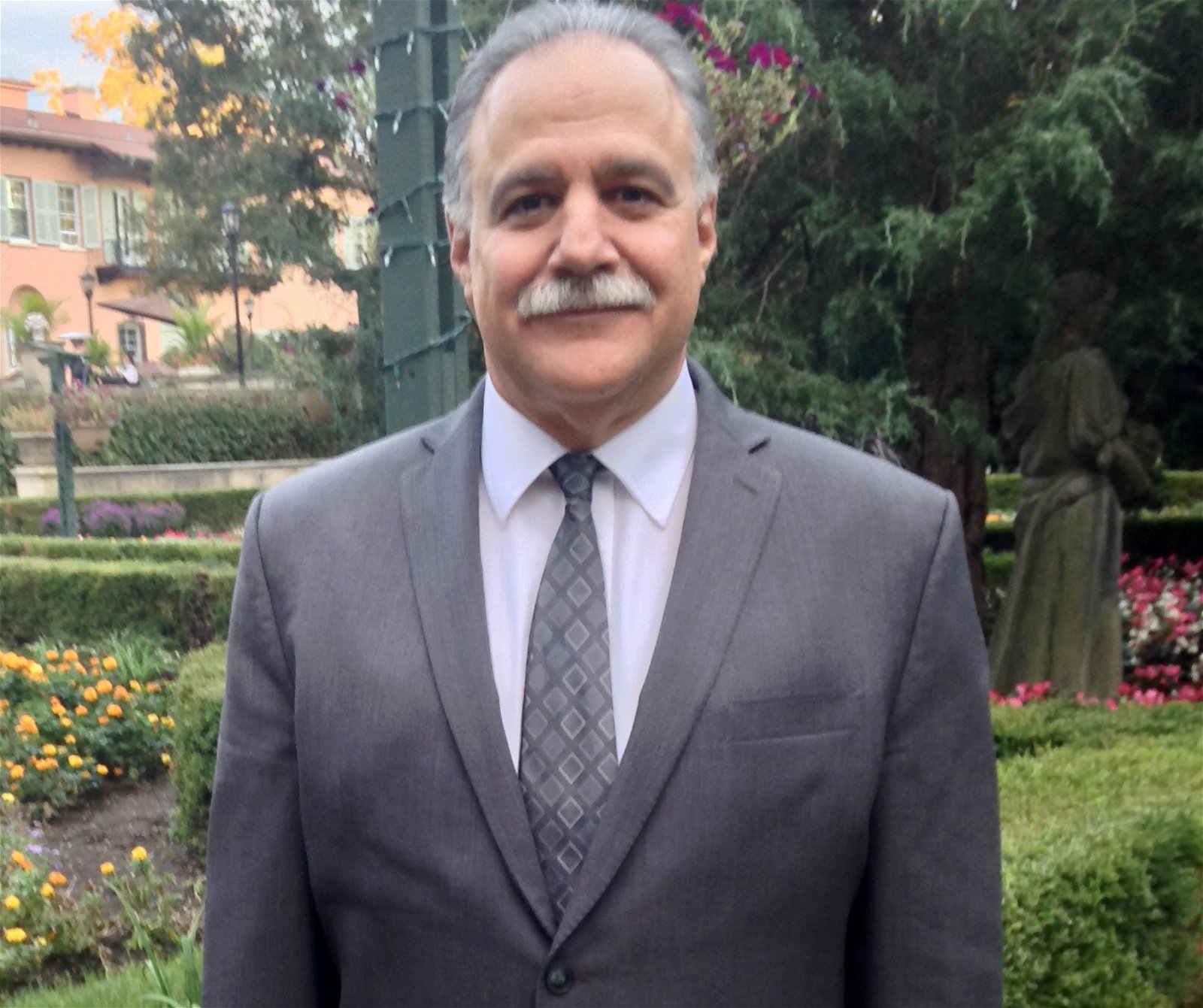
High on a Mountain
Outside Muradiye, Turkey, 2019
We’re cruising down the highway, looking at an occasional cow attempting to graze on the pavement or sometimes trotting along, insisting the highway, originally a field, should still be a field. We like calling out “Cow!” or “Sheep!” Especially when they’re not where they’re supposed to be.
About an hour and a half in we take a sudden turn away from the highway and end up on a long twisty dirt path, not designed for a tour bus.
“A surprise,” Annie says. Our bus rocks like a small boat in a big storm. A canal on one side, and rows of birch trees, which may or may not stop a vehicle from tumbling into a ravine, on the other side. We weave and bounce and crawl for a long, discomforting ten minutes. The bus stops, and we sit like grumpy children, then deboard saying things like “This better be good” and “Another former Armenian something.”
We are tired; we’ve been roaming all over Turkey for nearly two weeks discovering what we already knew: we were here, then we were occupied by another country, then massacred. Our history, presence, contributions, even names of our cities scrubbed clean. We have come to see spots they missed and the certain few things they have “allowed.” We have seen former Armenian churches 150-years-old or more changed into a Turkish gym, a library, a literature museum, a science museum, a cultural museum, a health clinic, a restaurant, a hotel, a prison, an apartment complex, a woodcraft shop, a depot, a trade school, and mosques. And young Turkish couples find that the ruins of abandoned Armenian churches are ideal for engagement or wedding pictures.
“The winners get to write history,” Dad used to say.
*
An Armenian friend said, “Why?” when Grace told him we were going to Turkey.
“Because we want to,” Grace answered.
“Do you think they want you?”
“It’s a pilgrimage.”
“Hmm,” he said, doubtfully.
But Grace is exactly right. All of us on this tour bus find meaning and value and enrichment from this experience, but not without some amount of sadness and traces of anger for the irrecoverable losses.
So yes we are tired, but Annie, our tour guide and fellow pilgrimage traveler, says, “Look up there!” And the mountain behind the canal goes up at close to a 45-degree angle, not scalable for us, and about 1,000 meters up is Saint Stephen’s Church, 150 years old, long out of service and completely mute on the subject of how one made it to church every Sunday. We feel amused, inspired, proud of the church where it is and the mystery of how it came to be, how a chunk of the side of a mountain was cut out to accommodate a church. The effect is it appears that the church pushed its way out of sheer rock. No access to it that anyone can see. No switchback trail, just a church defiantly sticking out of a mountain. There are multiple wows and I-can’t-believe-its.
“Okay,” Grace says, “this was worth the detour.”
“Sure was,” Arpi says.
“Henry!” I shout.
“Hah,” he answers, called out of his contemplation.
“Maybe they lived up there and didn’t have to make the hike.”
“I don’t think so,” he says and turns back to gazing at the church halfway up a mountain.
We are all quiet for a minute.
“What’re you thinking?” Ani asks me.
“It seems our people like elevation.”
“Indeed,” she says, putting her sunglasses on.
We take pictures, are called back to the bus and return in a slightly lifted mood.
The canal gurgles. The sun feels like an old friend standing close by.

Gyumri Girl
Gyumri, Armenia, 2015
As we walked past the destroyed buildings, we weren’t thinking about insufficient building standards, poor materials or stolen rebar, which made the 1988 Armenian earthquake more catastrophic than it should have been. We felt the loss and pain and the frustration for what must be the slowest recovery and restoration imaginable: over a quarter of a century and hollowed out or flattened buildings still there. And our little half-a-mile walk could not capture the enormity of the disaster. Some estimates have it that 50,000 died and 500,000 were left homeless. In fact one apartment complex we saw stopped us; we had heard that people were taking shelter in the parts that weren’t completely leveled. We stood silent, our thoughts a similar sorrowful hue.
A little girl, maybe six or seven years old, in a simple green dress, white socks and sneakers approached us. She surprised us when she spoke English.
“Hallo.”
“Hello,” Grace said, stooping a little to get closer.
“Inch bes es? Parev!” I said, anxious to display my Armenian, limited though it may be.
The girl ignored me. Maybe my pronunciation was bad. She and Grace were tuned in.
“Are you havink good time?” she said, folding her arms as if she were about to conduct a lengthy interview.
“Yes, we are. Thank you,” Grace said.
“You are from Amerga?” The look on her face indicated she already knew the answer.
“Yes, we are. Your English is very good,” Grace said, with a smile so big and so full of delight I thought for a second that she was about to pick the child up and ask her if she wanted an ice cream cone, or if she wanted to come home with us when we went back to “Amerga.”
“Tenk you,” the girl said. But now her face was steady, as if to say she was acquiring English, but it was no big deal. She told us she knew we were Americans because we took so many pictures. We laughed. I wanted to know her story but we all fell silent.
“Okay, bye-bye,” she said and walked away with her chin to the sky and her shoulders thrown back.

Taxi Driver
Istanbul, Turkey, 2019
We leave the ferry docks, heading back to the hotel. The driver has a death rattle cough. We tell him we’re Americans on vacation, but he knows otherwise. He goes on a coughing jag. “Armenian good and bad,” he finally says in English, “Turk good and bad.” He picks up his cigarette, hits it like it’s oxygen, comes within half an inch of hitting a woman and her toddler crossing the street.
“Heart!” he shouts, not paying any mind to the near tragedy.
He pounds his chest, cuts between a truck and tour bus, coughs more severely than before, louder, phlegm-filled, desperate.
“Heart!” he shouts, again. “It’s what’s your heart. Good or bad.”
“Yes,” I say, “that’s true.”
The truth here, though, is in the wind.

The Day We (Respectfully) Crashed a Funeral Service
Kinaliada Island, Turkey, 2019
We needed to be out of the city. The shortest way, a ferry boat to Kinaliada Island. There are no ocean liners at this dock, but as the ferry departs I snap a picture of Istanbul in the distance with the foaming water in the foreground. Later I text to family and friends, “What was Big Grandma thinking as the ship pulled away?” The answers trickled in:
She was praying
Looking forward to a new life
She knew God had a plan
Glad to get the hell out of there
Uncertainty, a little scared
Not that she would be standing on the deck at the stern. Not that she wasn’t down below with all the others in the steerage section. The sound of the water as the ferry moved through it, the sun pushing against a cold morning, the clattering engine, the creaking hull, Istanbul smaller and smaller, turning blue, then nothing. Big Grandma didn’t see it. She was holding her daughter in the dark, hoping for the best.
The island is a summer resort, something like Catalina. I didn’t see cars, only motorized carts. It’s quiet, end of the season. Cafes, ice cream stands, seafood restaurants, open but quiet.
Most, almost all, of the people here are Armenian. There is an Armenian church up on a hill. They have been summering here; they are content, well dressed and move confidently. Here, Turkey says, have an island. We won’t bother you.
At the church a funeral service is in progress. We walk around the courtyard, sit on a bench under a pine tree, start chatting softly, then louder, then scold each other, It’s a funeral in there!
“If we stay too long,” Henry says, “they will invite us to the luncheon.”
“It would be amot for us to go,” Arpi says.
“And amot if they didn’t invite us?” I ask.
“Yeah, I think so,” says Grace.
We laugh, softly.
The priest inside shouts, then sings, then is answered in song. I tell Grace it’s so good to hear Armenian and she agrees, her voice breaking as she repeats her affirmation, two and then three times. We sit together, the family of five, three sisters, two spouses. We are quiet for a while. Leaves fall from the trees that surround the courtyard.
The mourners begin to leak out of the church. We slip away quietly.




Be the first to comment